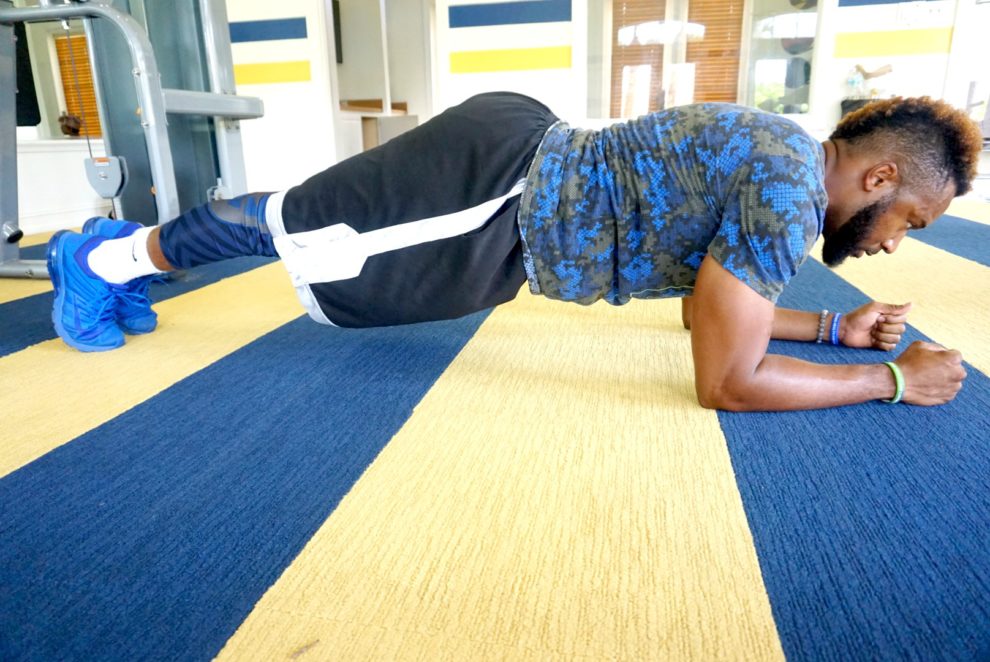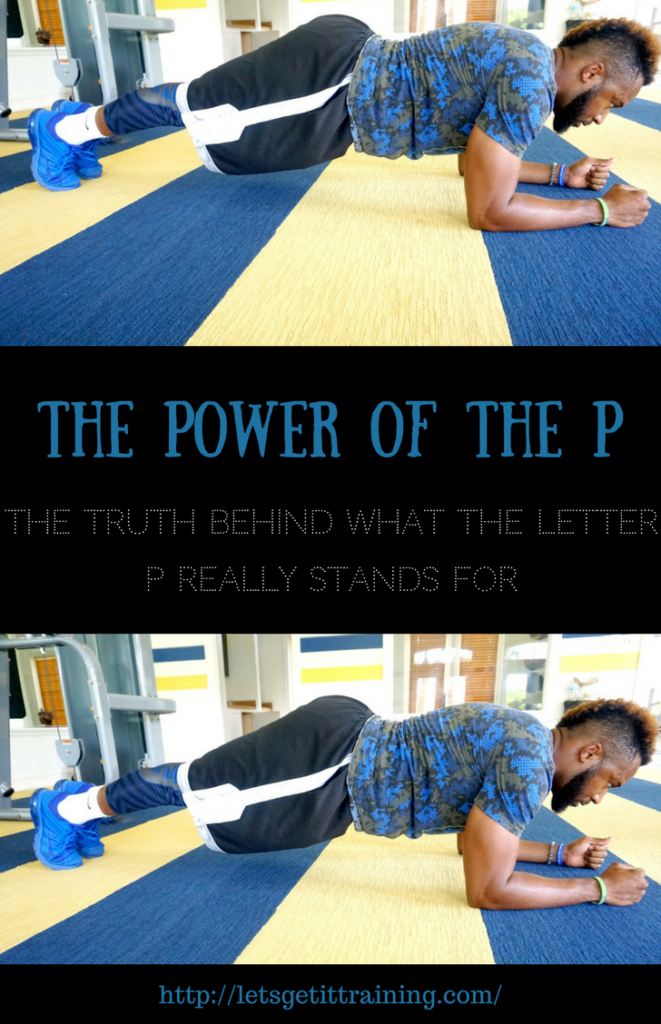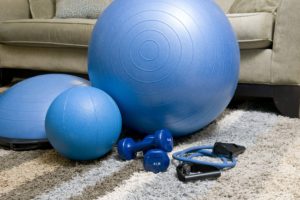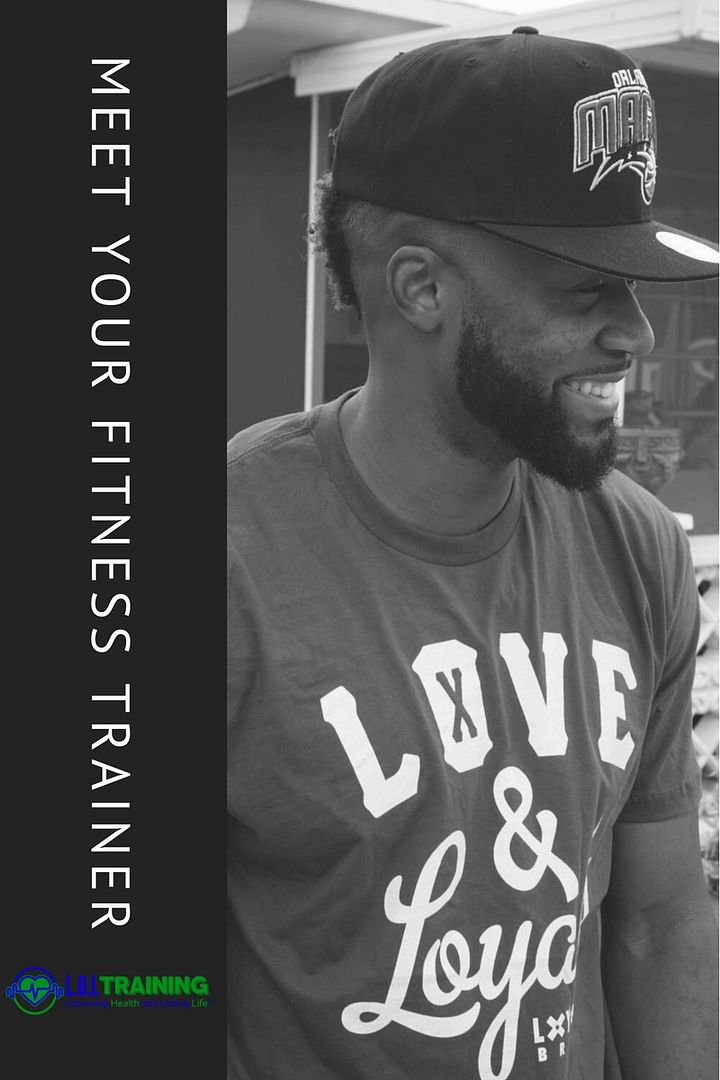P stands for Plank
…and YES there is definitely power in the plank. While in the beginning, you can barely hold yourself up long enough for it to be considered as a plank, it does get better with practice. Not easier, but better.
We use planks for several different reasons, but the reason I enjoy planking is that it’s not just a one target exercise. Most people use planks as an ab exercise; however, planks are utilized for so much more. Planks are also a core activity/exercise. Those familiar with the terms knows that this means with a few simple planks you can work not only your abs but your back, hips, and midsection as well. Depending on the type of plank you’re doing, you can also get an arm and leg workout in without even realizing it. A bonus is that planks can work your buns too; which is also considered to be a minor core muscle.
Planks are very easy to do, and they can also be done in the privacy of your own home, so there is no satisfaction in the excuse of not being able to make it to a gym. No gym? No problem!
Listed below are a few different types of planks:
Standard Forearm Plank
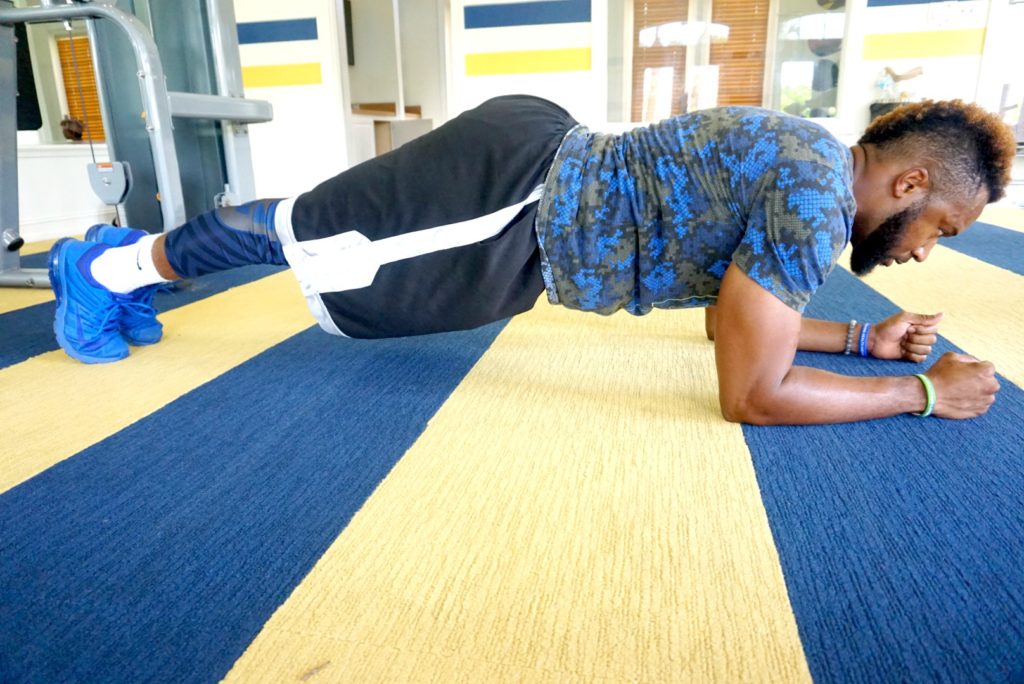
- Start from a push-up position; lower yourself down onto your forearms. Your arms should be parallel to one another with your hands lying flat on the ground. Some people even clasps their hands together, almost as if they are praying, this may be a little more comfortable. You also want to make sure that you’re squeezing your abdomen and buttocks, as tight as possible while holding this position.
- Hold this position for a minimum of 15 seconds. You may increase the length of time that you hold your plank as you advance. The ultimate goal is 1 minute or longer).
Single Arm Plank
- Start from the standard forearm plank position. Be sure that you’re holding yourself steady. Lift your right hand from the floor and you can either extend it out in front of you or hold it close to your side. Make sure that you’re squeezing your abdomen and buttocks while making certain that your shoulders and hips are parallel to the floor.
- Once you’ve completed these steps, bring your right arm back down so that you’re back at the standard forearm plank position. Repeat the above-mentioned steps on the opposite side (left hand).
- Hold this position for a minimum of 15 seconds. You may increase the time as you advance. The ultimate goal is 1 minute or longer).
Knee to Elbow Plank
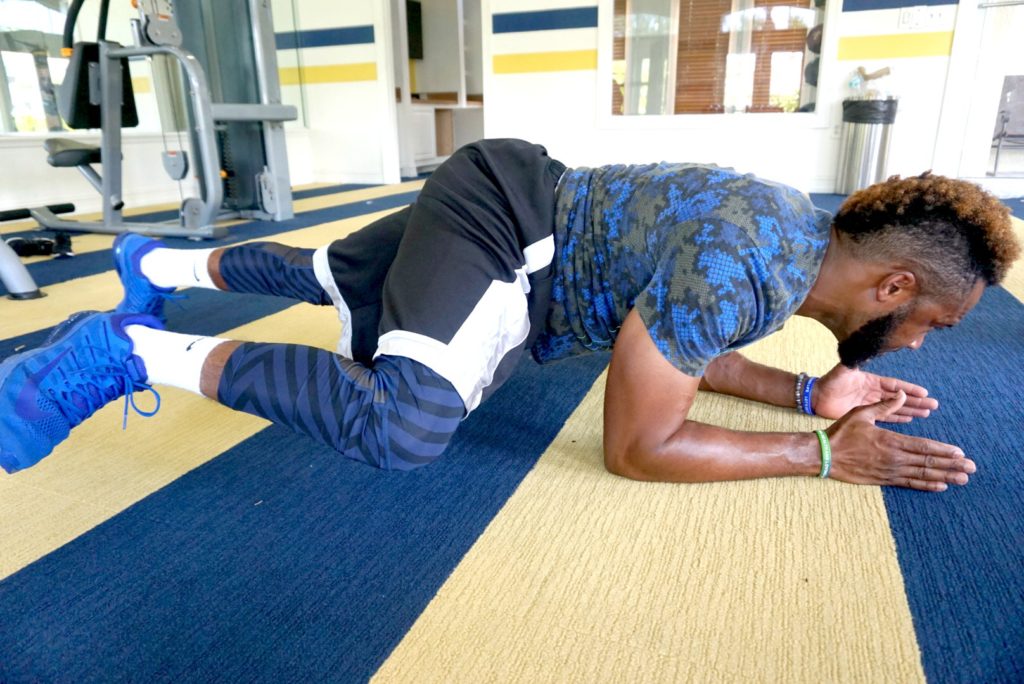
This Plank can be started from one of two positions.
- Standard plank position, or
- Push up position (in the shoulder up position)
- While squeezing your abdomen and buttocks, carefully bring your right knee up to your elbow. Lightly touch your right elbow with your right knee and then bring your right leg back down so that you are back in the start position.
- Repeat the exercise with the left leg and continue to alternate between the two for a total of 10 to 15 reps.
Buzz Saw Plank
- Start from the standard forearm plank position. Be sure that you’re holding yourself steady while squeezing your abdomen and buttocks.
- Carefully shift your body forward and past your hands, while on your forearm; then backward while maintaining the standard plank position and not allowing your hips to dip in the process.
Repeat this process for a total of 10 to 15 reps.
Plank Hip Dips
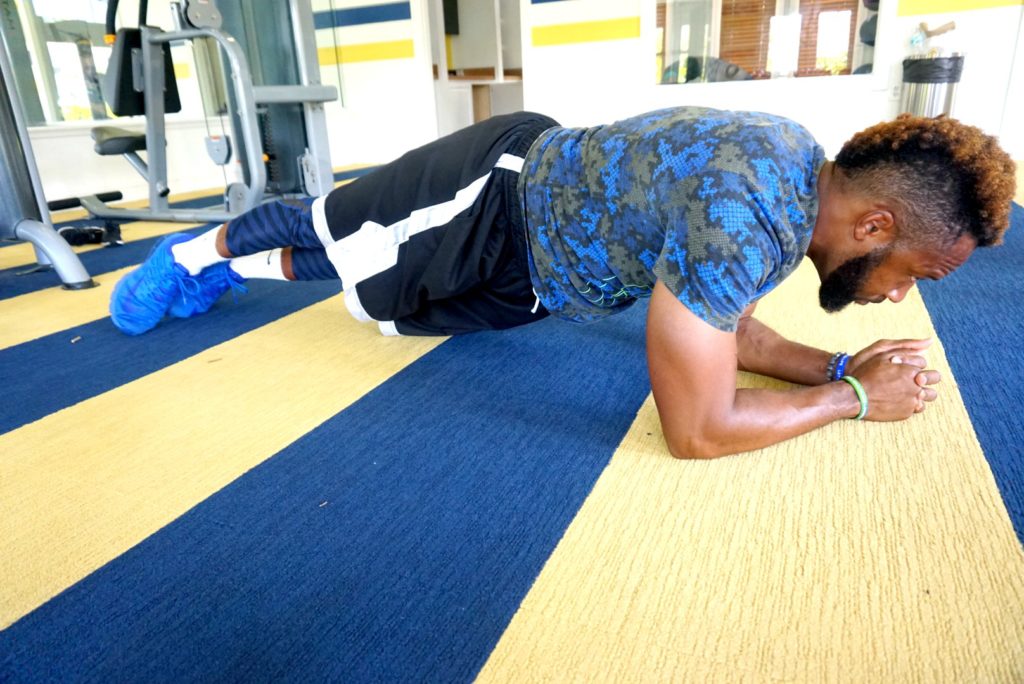
- Start from the standard forearm plank position. Be sure that you’re holding yourself steady while squeezing your abdomen and buttocks.
- Curve your hip inward by rotating your hips only, to the right. Almost so that your hip is touching the floor but not quite.
- Repeat the exercise on your left side and alternate until complete (left then right equals one).


